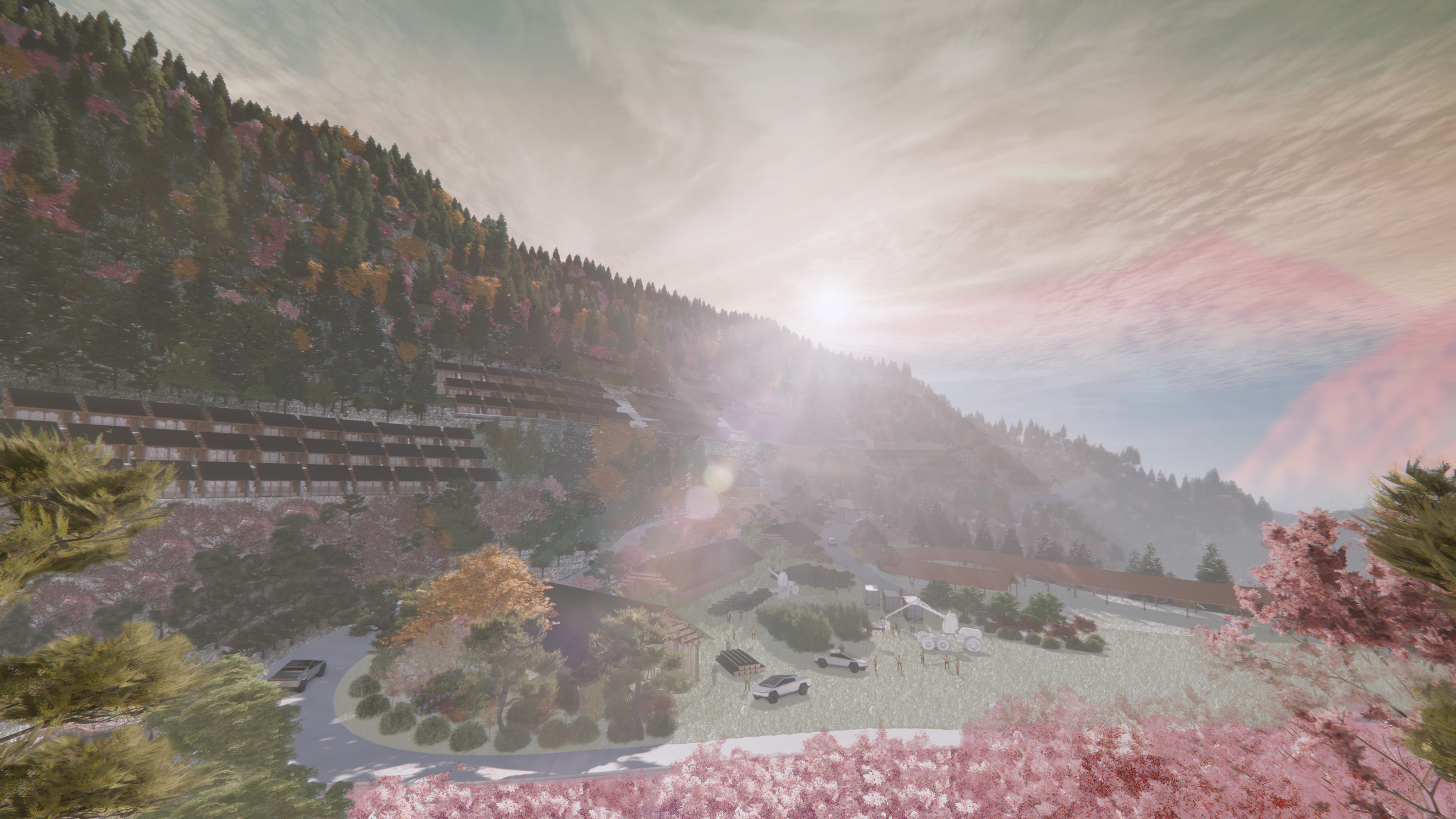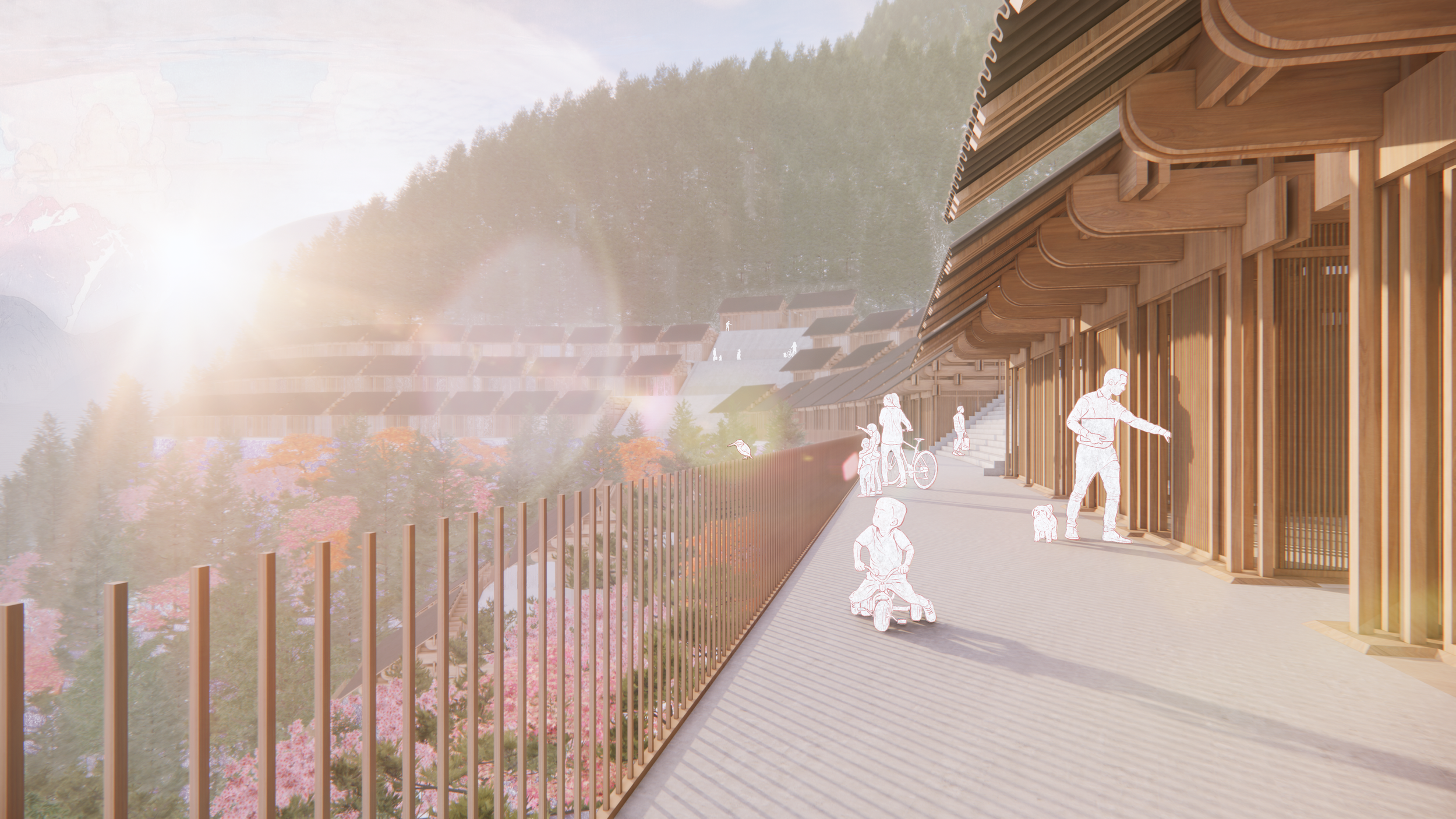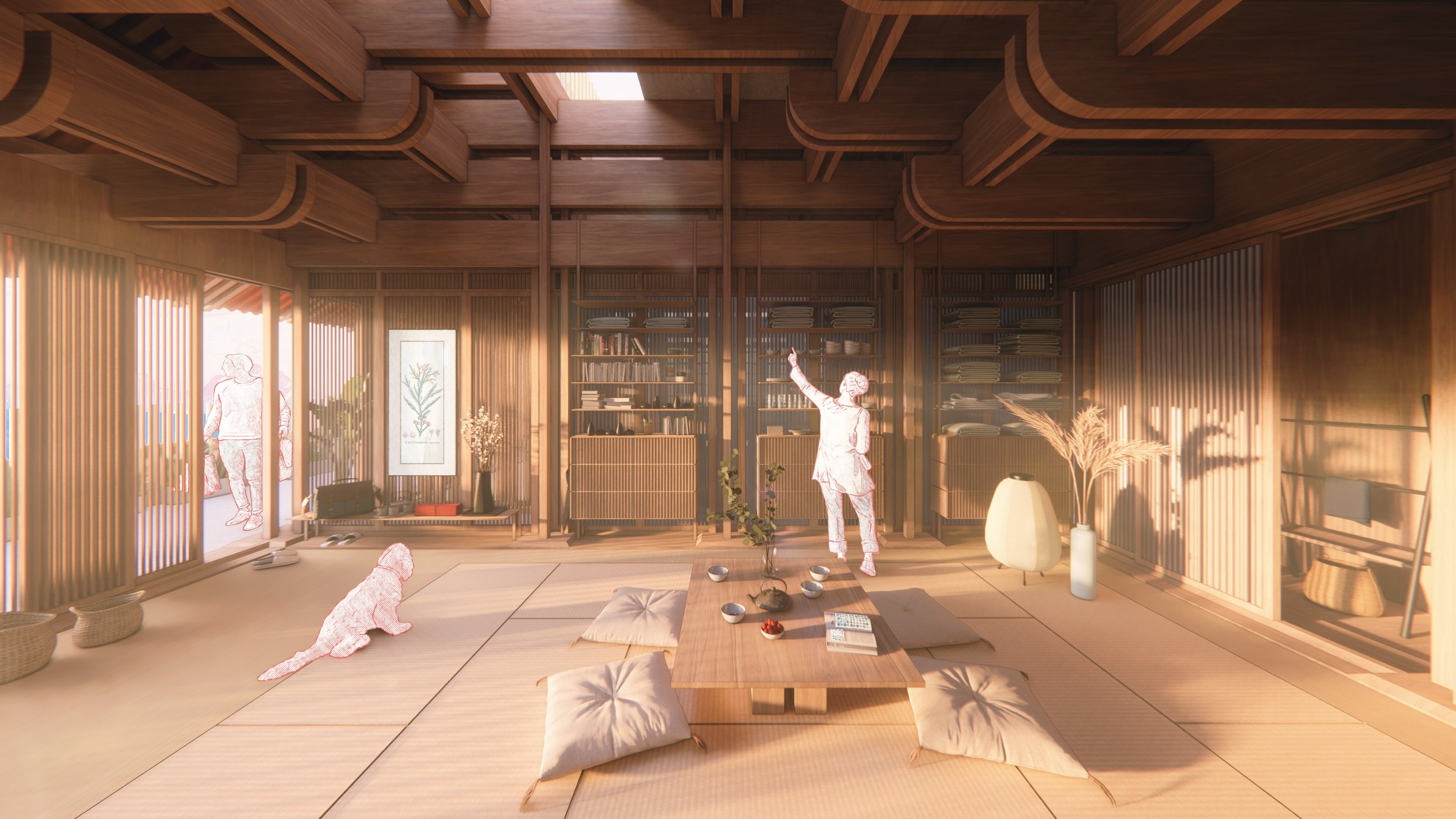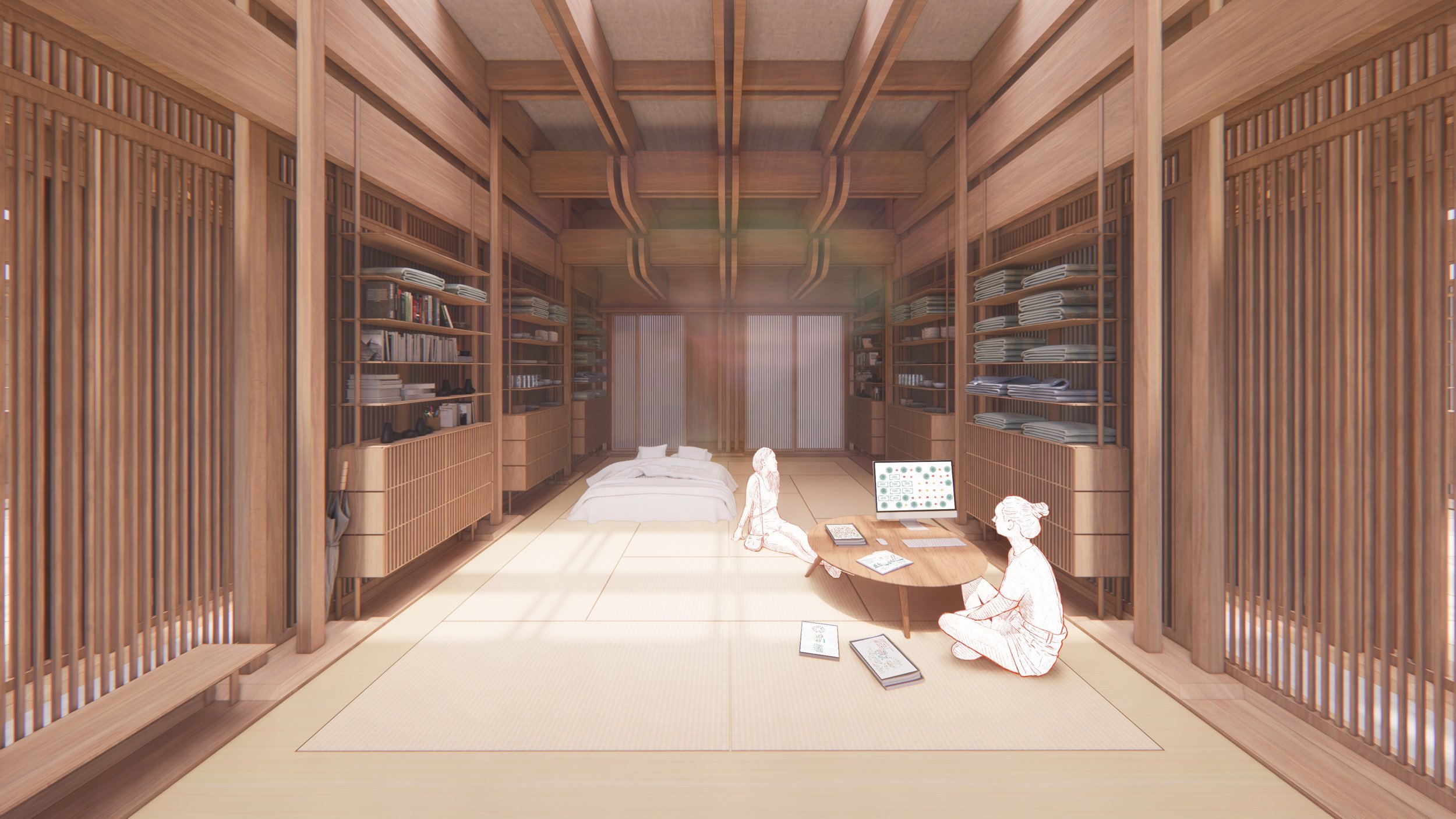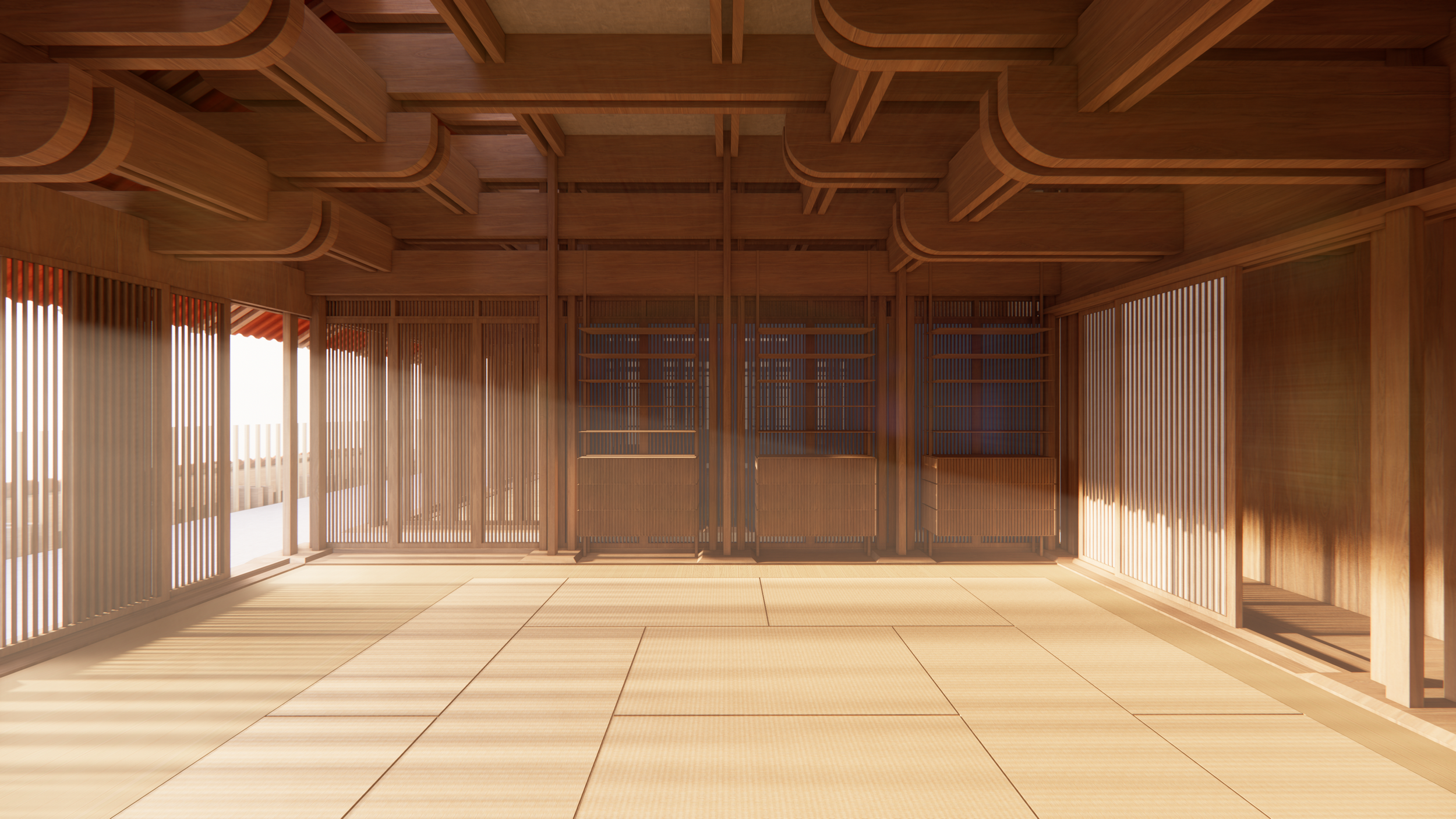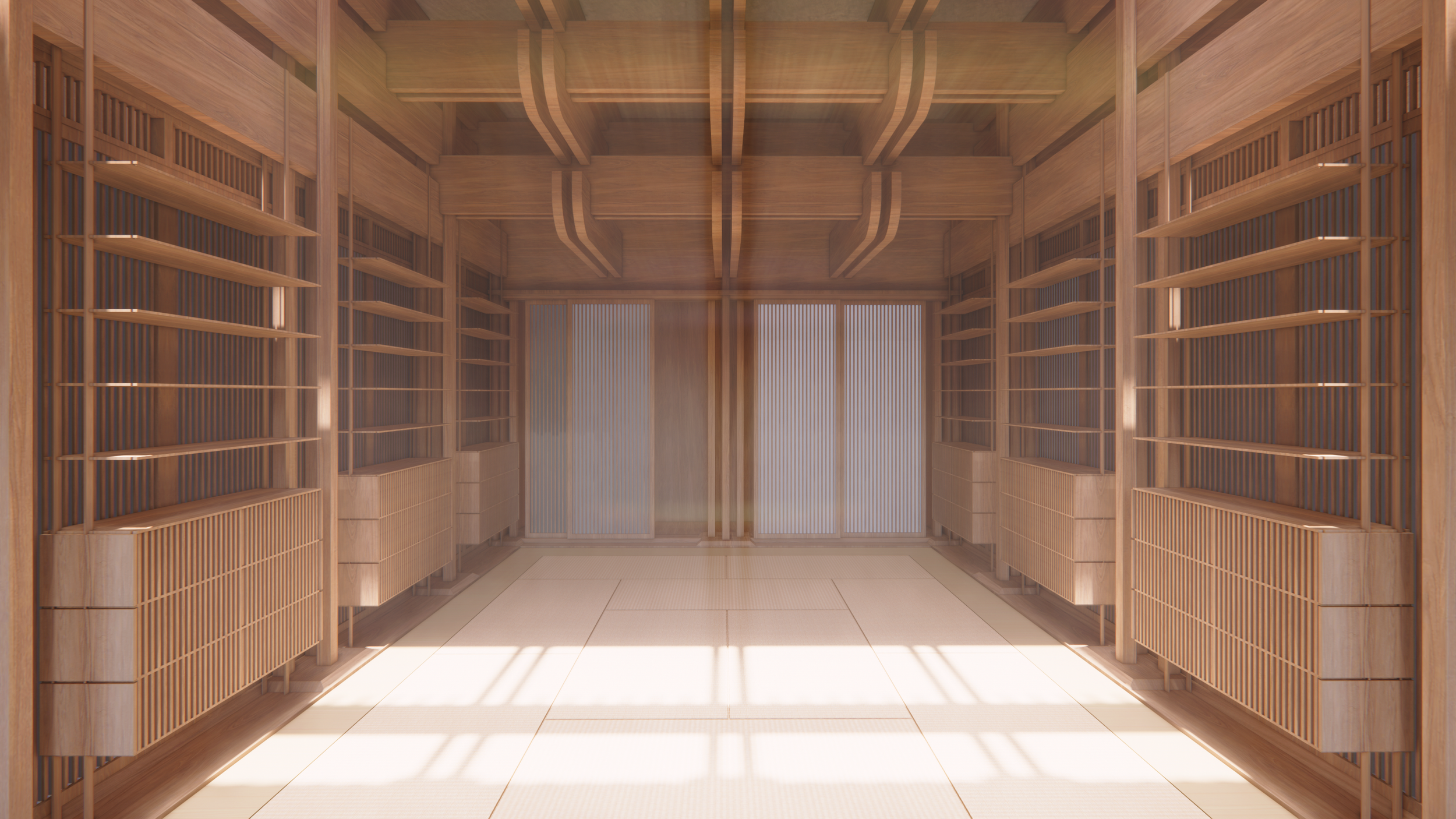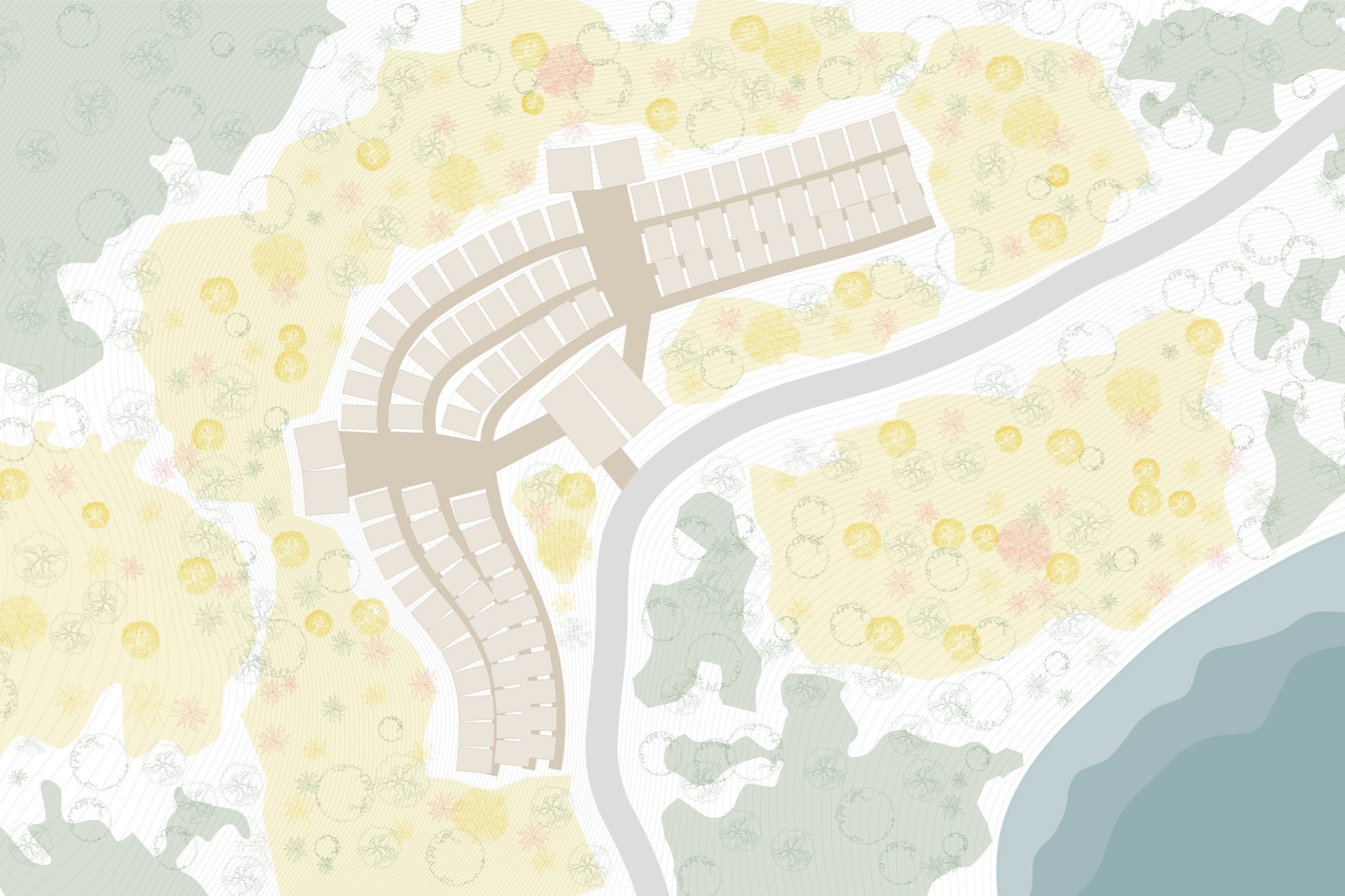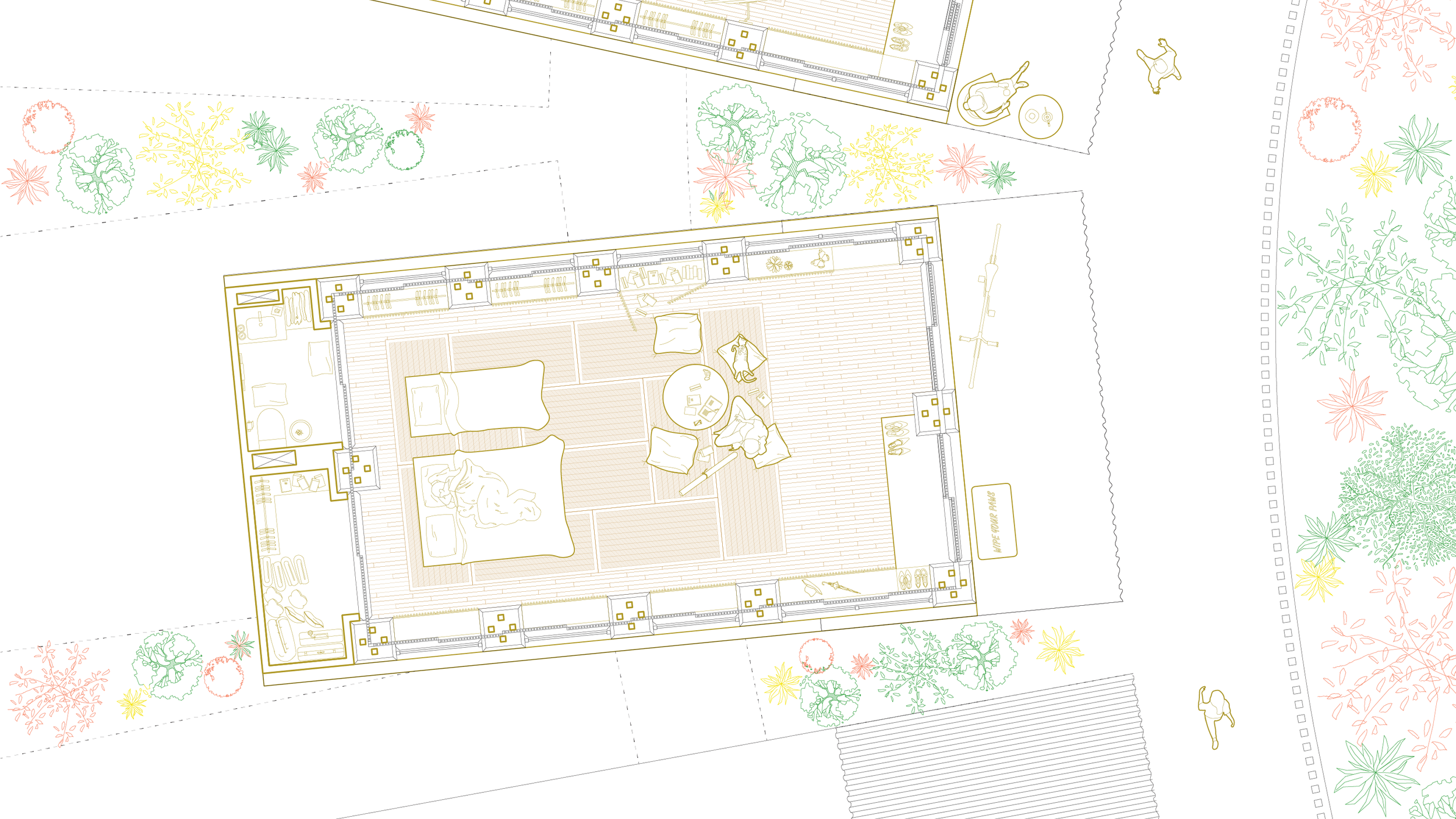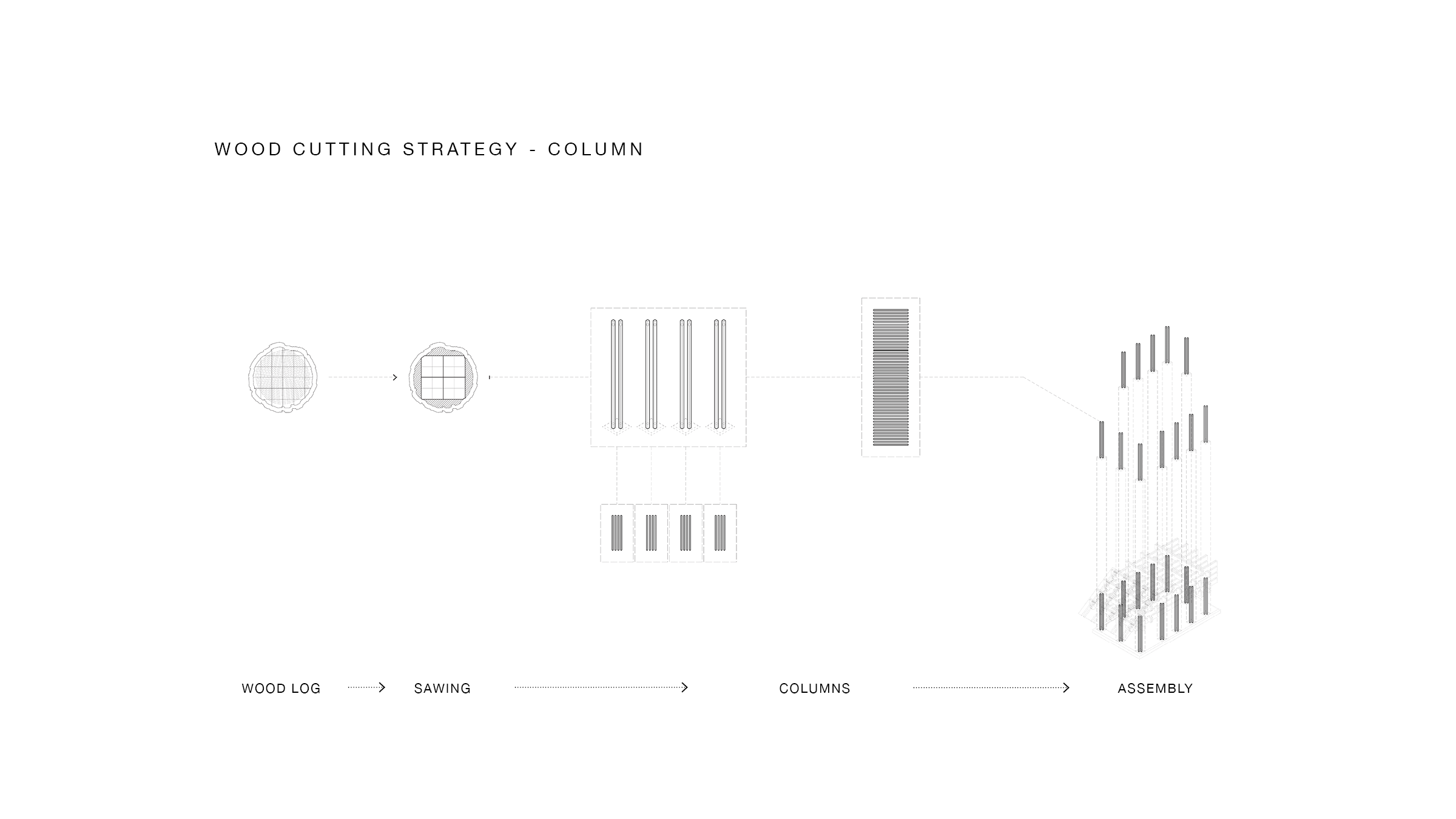
R U R A L I S M
climate conscious living beyond the urban
GSAPP ADVANCED 6 STUDIO FALL 2023
CRITIC DAVID BENJAMIN
PARTNER NARARYA RADINAL
SITE KAMIKATSU, JAPAN
SOFTWARE RHINO + ENSCAPE + AI + PS
This proposal aims to mitigate the impacts of climate change by creating a scalable and sustainable model of rural living. With a predicted 1.5°C rise in global temperature by 2040, many areas of the world will become uninhabitable. In order to mitigate and adapt to climate change, we should:
1. promote the growth and use of local sustainable materials
2. design dense rural communities with resilient low carbon architecture
3. establish a sufficiency mindset and circular economy with integrated waste-streams
In Japan, climate change has resulted in intense weather events that cause damage to people’s well-being, infrastructure, and the economy. We are proposing to implement this model in Kamikatsu, Japan, by calibrating to the nuances of local conditions and stakeholders. The new settlement will slowly revive the town’s forest industry, promoting the growth of native forests & restoring biodiversity to increase carbon sinks for a more sustainable future.
70% of Japan’s surface area is covered with forests, a crucial role in absorbing carbon, but only 0,2% are harvested for domestic wood supply. A reforestation policy led to the proliferation of Japanese Cedar trees, due to its high yields and growth rates. However, this caused the overgrowth of cedar trees and the resulting monoculture wiped out the region’s biodiversity.
The 2 cities that we visited during our travel week inspired some of our strategies, Hida (the forest city, where 93% of the city is covered by forests with an impressively diverse 2,100 species of plants and Kamikatsu (the zero waste village), where the population sorts their waste into 47 categories and thus, 80% of the waste is recycled back as resources.
We explored the local architecture of traditional Japanese roof and structure system, built from local wood, and to take this vernacular language and densify it. The 3 phases of our proposal will have cedar forest clearing and thinning for the construction of new dwellings and planting diverse species of local trees. The act of forest thinning and replanting diverse species will accelerate the increase of carbon sequestration. The cedar will be used for all the different parts of the dwellings, the column and roof structures, and wooden screen walls.
As for new ways of living, we were inspired by the Onsen Concept, the idea of sharing the most intimate spaces with the community, and also the Tatami room concept, where we can densify the housing units by using only one room for flexible programming. This eliminates construction redundancy in building, and overall less area needed per resident. The units are flexible with no fixed furniture and storage spaces are located along the walls, thus catering to the resident’s needs.
As the forest and demographics of the town begin to change, we imagine that this movement of rural living can be a positive feedback loop for both humans and for the climate.

